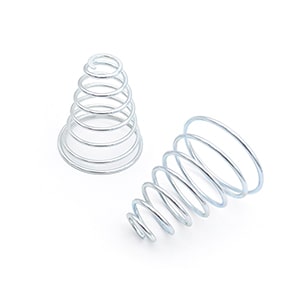Get unique, complex parts easily. No matter your requirements, Chaoyi Spring creates hard-to-produce coil springs and wire forms.
Let us help you create the custom wire form you need, from S-hooks and J-hooks to utility hooks and more.
We work closely with customers across a wide range of industries, helping them design and manufacture made-to-order parts.
Why choose Chaoyi Spring? We prioritize customer-focused collaboration, modern equipment and the latest technology to make your parts per print.
Find the information and guidance you need, from measuring a spring to learning about materials, placing an order and much more.
Springs, those ubiquitous components found in everything from car suspensions to intricate clockwork mechanisms, are marvels of engineering. Their ability to store and release energy through elastic deformation makes them


Springs, those ubiquitous components found in everything from car suspensions to intricate clockwork mechanisms, are marvels of engineering. Their ability to store and release energy through elastic deformation makes them indispensable across countless applications. But understanding how much a spring can compress before reaching its limits is crucial for ensuring safe and reliable performance. This article delves into the principles behind calculating the maximum compression of a spring, exploring key factors like spring rate, material properties, and load considerations. We'll uncover the complexities of spring design, highlighting the importance of careful calculations and material selection to prevent spring failure and ensure optimal performance.

Spring compression is a fundamental aspect of spring mechanics, representing the amount of deformation a spring undergoes when subjected to a load. This compression is directly related to the spring's inherent stiffness, known as its spring rate, and the magnitude of the applied force. The higher the spring rate, the greater the force required to achieve a given compression. Conversely, a spring with a lower spring rate will compress more readily under a given load.
The maximum compression of a spring is a critical parameter, defining the maximum deformation the spring can withstand before failing. It's like a safety threshold, ensuring the spring can handle the expected loads without permanent deformation or breakage. Exceeding this limit can lead to spring failure, potentially jeopardizing the functionality of the system it's part of.
Several factors influence the maximum compression of a spring. These include:
To determine the maximum compression of a spring, engineers often rely on a combination of theoretical calculations and empirical testing. The formula used to calculate maximum compression is:
Maximum Compression = (Load / Spring Rate) - Free Length
Where:
This formula provides a starting point for estimating maximum compression. However, it's important to note that this is a simplified model and doesn't account for all real-world factors. To ensure accuracy and safety, empirical testing under representative load conditions is often employed.
When a spring is subjected to excessive compression beyond its maximum limit, several failure mechanisms can occur, including:
To ensure a spring's reliable operation, careful design considerations are essential:
Understanding the maximum compression of a spring is essential for engineers and enthusiasts alike. By carefully considering spring rate, material properties, load types, and environmental factors, we can design and utilize springs effectively, preventing failures and ensuring optimal performance. As we navigate the world of springs, comprehending their limits empowers us to harness their incredible potential, from powering intricate mechanisms to supporting robust structures.
The maximum compression of a spring represents a critical threshold beyond which the spring's structural integrity is compromised. Understanding the factors that influence maximum compression and employing appropriate design considerations is crucial for ensuring safe and reliable performance. By mastering these concepts, we can fully leverage the power of springs, knowing we're operating within their limits and maximizing their potential.
Browse some of the custom wire forms and springs that we manufacture. Don’t see what you need? We specialize in made-to-order products that meet your application requirements.
Visit Our GalleryNeed a custom wire form or coil spring? We make it work. Fill out the contact form and a representative will respond within 1 business day. If you have a PDF or CAD file, you can submit to request a quote.